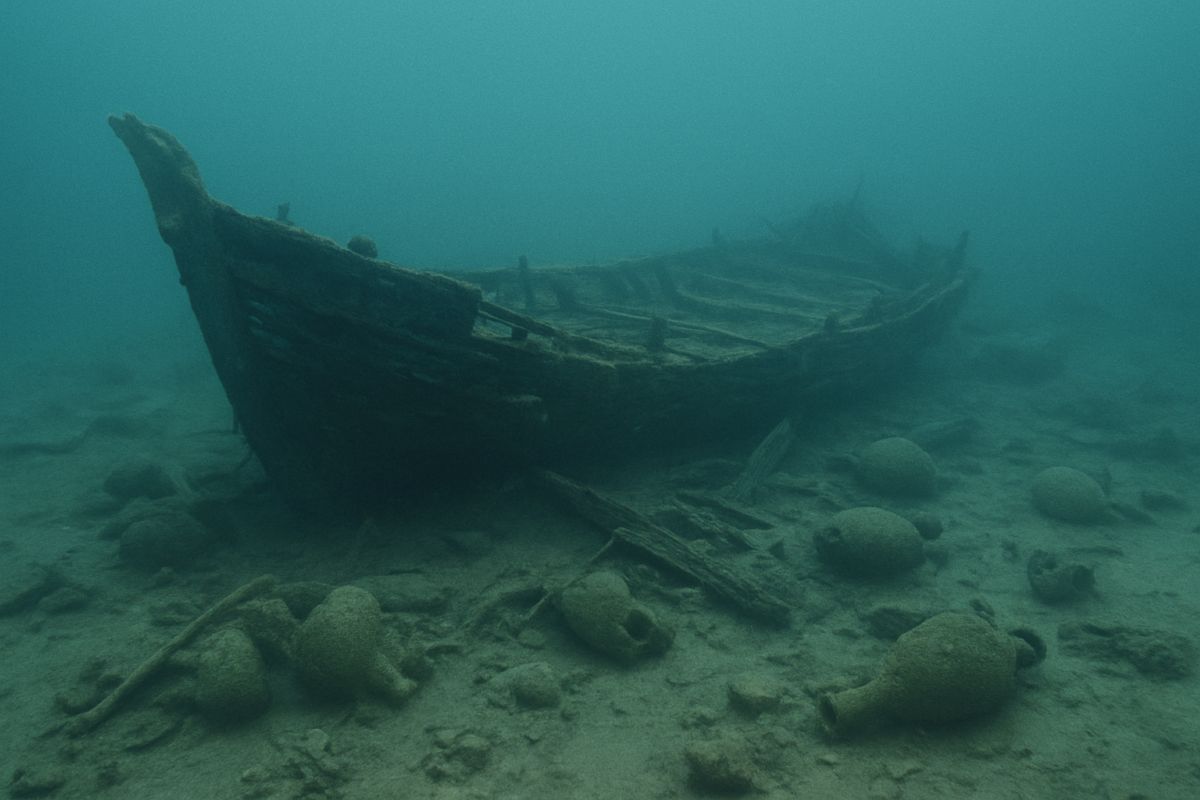
An interpretation of an ancient shipwreck. Credit: GreekReporter Archive
Archaeologists have uncovered a remarkably well-preserved Roman shipwreck in Barbir Bay, Croatia, where it lay undisturbed for nearly 2,000 years.
The vessel, measuring about 12.5 meters (41 feet), dates to the 1st–2nd century AD and offers one of the most complete examples of ancient seafaring in the Adriatic. It was first detected four years ago by researchers from the International Centre for Underwater Archaeology in Zadar during a survey of the Roman harbor at Barbir.
The initial find — a piece of timber with an iron nail — hinted at something more significant. When the team expanded its search the following year, it confirmed the presence of a Roman ship. After four years of careful investigation, the final phase of excavation has now revealed the vessel in full.
Rare glimpse into Roman shipbuilding
Mladen Pešić, director of the International Centre, stated that the lengthy research and exploration process ultimately led to the complete uncovering of the ship. He described it as an extraordinary discovery, preserved in exceptional condition after lying beneath the seabed for two millennia.
What makes the wreck especially valuable is the survival of parts of its upper structure, a rare element in ancient shipwrecks. The find gives researchers a unique opportunity to study Roman shipbuilding techniques in detail.
Evidence of trade and agriculture
Excavations revealed hundreds of olive pits inside the wreck, while grapes, peaches, and walnut shells were recovered in the harbour area. These remains suggest the vessel transported agricultural produce, most likely from nearby estates.
Anton Divić, head of the Croatian underwater archaeology company NavArchos, stated that the ship was designed for stability and endurance, built to carry heavy cargo over medium and long distances. He added that vessels of this kind were central to trade and daily life along the Adriatic coast two thousand years ago.
A 1:10 scale model of the ship will be created and displayed at the Zadar Centre for Underwater Archaeology.
Preservation through digital recording
To record the wreck with precision, the team has been producing photogrammetric models by compiling hundreds of overlapping photographs. Because raising the vessel would be prohibitively expensive, it will remain on the seabed.
Once fully documented, the ship is covered with geotextile and reburied under sand, replicating the natural protection that kept it intact for centuries.
International recognition and collaboration
The project is supported by Croatia’s Ministry of Culture and Media and has already gained international attention. In 2024, the shipwreck was featured in National Geographic’s “Lost Treasures of Rome” and the American series “Changing Seas,” showcasing Croatia’s underwater heritage to global audiences.
This season’s excavation included not only Croatian experts but also specialists from Poland’s Nicolaus Copernicus University, Germany’s Max Planck Institute, France’s Aix-Marseille University, the French firm Ipso Facto, and Croatia’s NavArchos.
The discovery is regarded as one of the most important examples of Roman maritime heritage in the Adriatic, offering rare insight into the region’s trade, agriculture, and seafaring traditions.